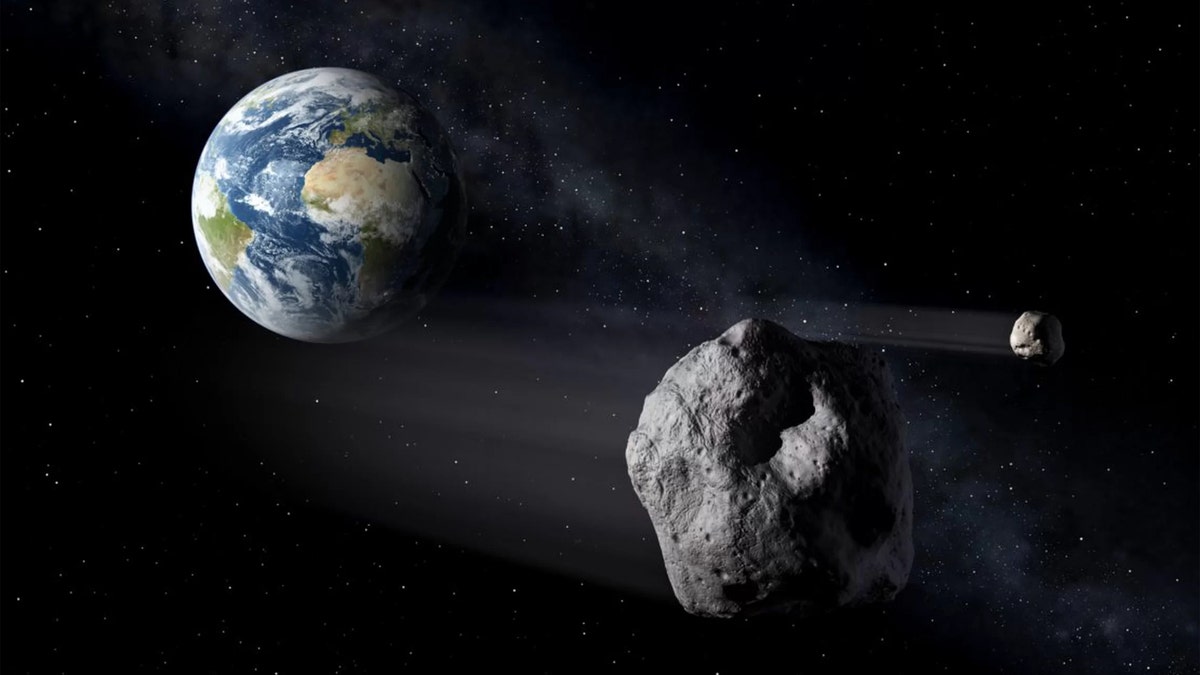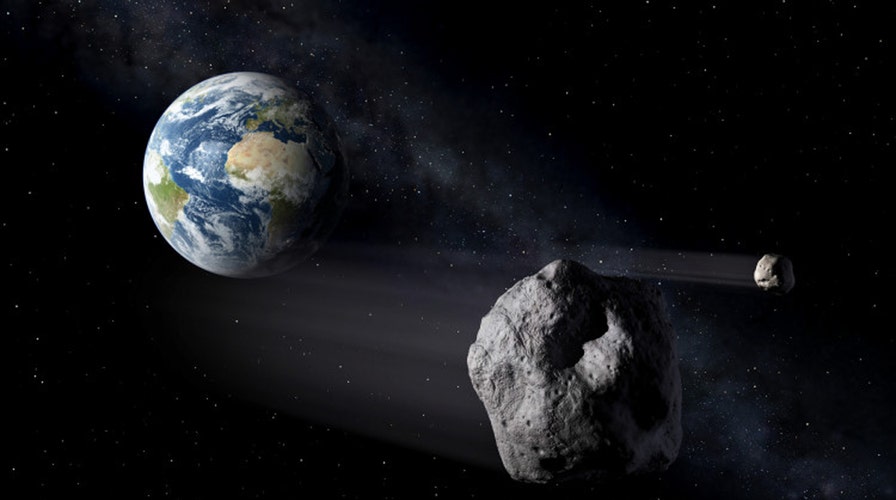Fox News Flash top headlines for September 22
Fox News Flash top headlines are here. Check out what's clicking on Foxnews.com.
An asteroid will have an "extremely close encounter" with Earth on Thursday, when it flies by the planet at a distance of fewer than 20,000 miles, according to the Virtual Telescope Project.
Asteroid 2020 SW will safely fly past the planet at a distance of approximately 17,556 miles, according to EarthSky.org.
It was first discovered on Sept. 18, 2020, by the Mt. Lemmon Observatory in Arizona, but it has made close approaches since Sept. 1975, according to NASA's Center for Near Earth Object Studies (CNEOS). Since 1975, it has made approaches at a fairly constant rate.

File image - Earth is surrounded by a host of asteroids. (Credit: P. Carril/NASA)
ASTEROID TO FLY PAST EARTH JUST BEFORE ELECTION DAY, NASA SAYS
The exact size of 2020 SW is unclear, but it is "estimated to be about 14 to 32 feet in diameter," according to EarthSky.org.
"Potentially hazardous" NEOs are defined as space objects that come within 0.05 astronomical units (4.6 million miles) and measure more than 460 feet in diameter, according to NASA. According to a 2018 report put together by Planetary.org, there are more than 18,000 NEOs.
After it flies past Earth on Thursday, the next time it will zip past the planet is nearly a decade later, on June 3, 2029.
In August, an asteroid the size of a pickup-truck flew within 2,000 miles of Earth, the closest ever recorded. It was missed by NASA until after it flew past the planet.
NASA unveiled a 20-page plan in 2018 that details the steps the U.S. should take to be better prepared for NEOs, such as asteroids and comets that come within 30 million miles of the planet.
A recent survey showed that Americans prefer a space program that focuses on potential asteroid impacts over sending humans back to the moon or to Mars.
NASA Administrator Jim Bridenstine said in April 2019 that an asteroid strike is not something to be taken lightly and is perhaps Earth's biggest threat.





















